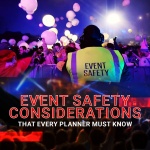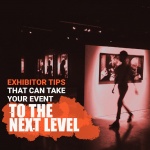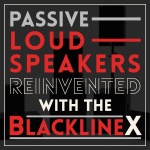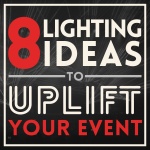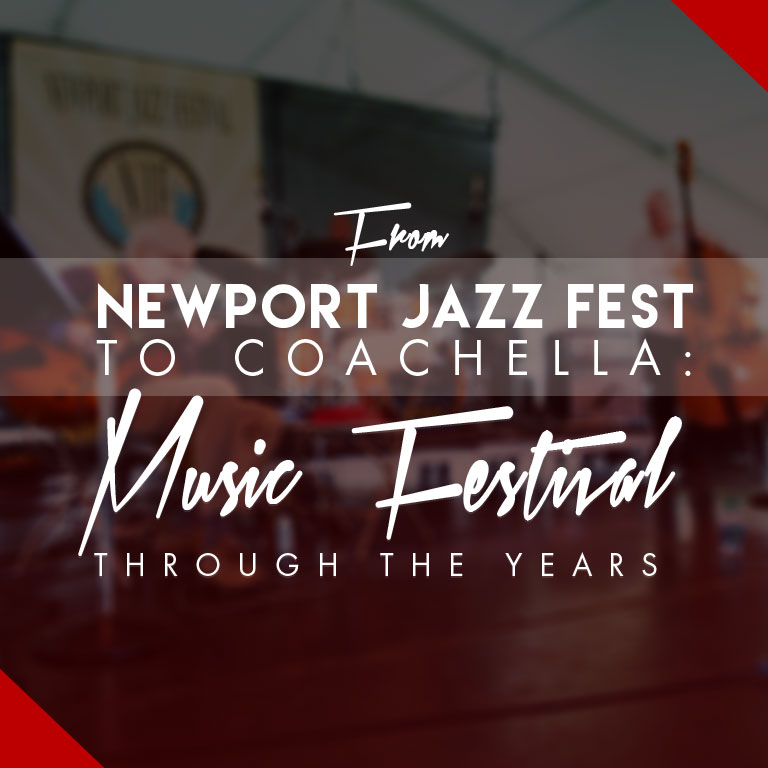
Music festivals are the rave of the youth in generations since the 60’s. It drew tens and hundreds of thousand music lovers all swaying on the same beat. Now, most of us are familiar with Coachella, Lollapalooza and Bonnaroo Fest and more. But do you know how it all started?
Since the 1960s, the youth has been raving about music festivals and the clamor for such events continued from one generation to the next. And all throughout, the event never failed in bringing thousands of music lovers together.
While today, music festivals are often associated with more familiar and popular events like Coachella, Lollapalooza, Bonnaroo Fest, and more; the early beginnings of the modern day music festival present some interesting information that you’d want to know, starting from the classic and posh Jazz to boho and hipster Coachella.
Here’s a look back to show how Music Festivals evolved throughout the years.
Newport Jazz Festival (1954)
It was only in the 50’s that the idea of a music festival boomed into popularity. It was during the prominence of Jazz music that the festival was born. The 1954 Newport Jazz Festival is often referred to as the precursor of modern-day music festivals. It was held at the Newport Casino in Rhode Island and was a brainchild of an American Socialite, Elaine Lorillard. It was a very special music event, incomparable to what music festivals are now. The festival included academic panel discussions aside from live performances by legendary Jazz musicians, singers, and bandleaders.
For two days, the lawns of the Casino were filled with over 11,000 crowd watching jazz greats like Billie Holiday, Lester Young, and Stan Kenton. Unlike today’s music festival, the Newport Jazz was graced by gentlemen in suit & tie, and ladies in their evening dress.
The festival saw majority of all Jazz Greats from the 50’s onwards and continues to entertain jazz enthusiasts to this day.
Bonus: Nice Jazz Festival (1948)
While Newport Jazz Festival was the first in America, it’s not the first of its kind in the world. The first jazz festival is credited to Nice Jazz Festival (1948) in the picturesque city of Nice, Southern France and was held at the Nice Opera in Place Massena. The jazz festival was graced by no other than Louis Armstrong, Django Reinhardt, and Claude Lutter.
The Newport Folk Festival (1959)
In 1959, the Newport scene saw another music festival, the Newport Folk Festival. It was founded by George Wein, a music producer, and several other singer-songwriters. It is the festival that promotes the beauty of American tradition in folk music. The debut showcased folk musician Pete Seeger, Joan Baez and the Kingston Trio. The debut saw about 13,000 fans and hence became an annual affair. Four years later, Bob Dylan graced the stage and gave the festival a huge success.
However, due to lack of funding, the festival took on a 15-year hiatus since 1970. And in 1985, the festival became a for-profit event and was moved to Fort Adam State Park. The music genre also expanded to accommodate blues, rock, indie, and rock.
Fantasy Fair and Magic Mountain Music Festival (1967)
This is the first authentic rock music festival that gathered thousands of 60’s teenage Hippies and celebrated the California Culture. It was supposedly a promotional event for the AM radio station KFRC 610, but according to the Rolling Stones, it marked the start of Summer of Love–a youth movement that brought together hundreds of thousands of hippies. The festival showcased more than 30 acts including Jefferson Airplane, Roger Collins, The Doors and Captain Beefheart & the Magic Band.
The Fantasy Fair and Magic Mountain fest was a celebration of 60’s art and music culture. As such, the music fest also doubles as an art fair drawing thousands of arty people and music junkies. The event features an adventure ride up the mountain at the Marin Valley. And its very own transportation line which they call “Trans-Love Bus Line” –a wordplay of lyrics in Donovan’s hit song “Fat Angel”. And when the attendees felt a little tipsy and trippy, there were “acid doctors” to take care of them.
According to “Johnny’s History Of Rock”, this festival spurred the blossoming of the hippie music scene.
The Monterey International Pop Festival (1967)
A hundred mile and two weeks later, the Monterey International Pop Festival debuted in Monterey County Fairgrounds, California. It became the first major rock festival that inspired Woodstock two years later and sparked the worldwide popularity of many rock stars of the 60’s. According to the New York Times, the festival was like a protest movement aiming to gain the “same respect as jazz”. Mr. Adler, one of the founders of the festival told the NY Times that when they were planning for the event, “The conversation drifted toward the fact that rock ’n’ roll was not considered an art form in the way that jazz was.”
It brought together more than 35 popular and yet unknown acts of the decade coming from an eclectic mix of genre and style. It was in the festival when Jimi Hendrix set his guitar on fire while playing the “Wild Thing”; when Janis Joplin scored a contract with Columbia Records and when many music greats from the US, India and South Africa made their debut in front of the American crowd.
Isle of Wight Festival (1968)
Already a hit in the US, the Hippie music and art movement in the 60’s flew to the British Isles, thanks to Jefferson Airplane–the Bay Area band who first reached worldwide success. The first leg proved to be a hit, gathering over 10,000 audiences in the county. The headliners in this year, e.g Halcyon Order, The Crazy World, and Smile joined Jefferson Airplane in performing for the crowd of flower children.
The following year, Bob Dylan headlined the festival and earned a much bigger support of 150,000 attendees. Despite a huge crowd in a tiny island county, the logistics were never a problem. Such was the success of 1969’s Isle of Wright that in 1970, it drew more than half a million audiences, possibly reaching 700,000 crowds. This has brought the British Parliament to pass the “Isle of Wright Act” regulating the gatherings of more than 5,000 people.
Woodstock (1969)
Between the 17th and 19th of August 1969, the three days of “Love and Peace” occurred in Bethel, New York. The Woodstock festival drew more than 500,000 attendees and became almost synonymous to “hippie”. A countercultural youth movement, the hippies promoted peace, love and communal living as against to the disenchanting capitalist America who’s waging a ruthless struggle in Vietnam War. As such, the movement and the music festivals it created was not only a subculture in entertainment but also took on a socio-political significance.
Woodstock showcased 32 acts that include Jimi Hendrix, Janis Joplin, Joan Baez, The Grateful Dad, and Arlo Guthrie. Many of the artists and the hippie attendees protested against the Vietnam War.
Woodstock became the most famous and often considered as one of the most significant events in Western pop-culture. Such was the fame of the festival that it named the whole generation of 1969, the Woodstock Generation.
Glastonbury Festival (1970)
Now a very popular music festival in England, the Glastonbury Festival first took place in Pilton, England in 1970, and was named Pilton Festival. It was organized by a dairy farmer who had to pay off his bank debt. Inspired by the open ground concert of Led Zeppelin, he hosted a “mini-festival” in his farm. Gathering only 1,500 attendees he opened acts including Al Stewart, Marc Bolan, Quintessence, and Stackridge.
A year later, the show was transformed into what it is now called the Glastonbury Festival. The 1971 Glastonbury was “free” for all audiences having many sponsors covered much of the expenses. The festival was graced by the late David Bowie in a now-famous Pyramid Stage. Hawkwind, Mighty Baby, and Traffic also joined Bowie in headlining the event. Compared to the previous festival, it is much more successful drawing about 12,000 audiences.
Rock in Rio (1985)
With the Woodstock Festival, we saw that the music festival is not only a music and arts festival but also a place for social and political discussions of the time. This fact is also true in Brazil. Rock in Rio (1985) was a massive music festival that echoes the socio-political sentiments of the Brazilians after almost two decades of military dictatorship. According to their site, “it supported a new generation of artists reviving national music.” With live acts ranging from AC/DC to Ozzy Osbourne, and from rock band Queen to James Taylor, the festival drew roughly 1.3 million people from all over the world in one place, the City of Rock.
Coachella (1999)
Jump to 1999, one of the hottest music festivals in the world was born: the Coachella Music Festival. Named after the Californian valley where the event was held, Coachella is now a star-studded event everyone raves about each year. Its beginnings can be rooted in 1993 when the band Pearljam boycotted Ticketmaster and its affiliated venues. Having nowhere to show their concert they looked for a place to hold a music festival and they found the Coachella Valley. In 1991, the Coachella has opened gathering almost 25,000 music lovers.
The live acts include A Track, the Chemical Brothers, and Perry Farrell. The music fest did not push through the following year because of heat plague, but it resumed in 2001 with James Addiction, Weezer, The Roots and Fatboy Slim as headliners. From then on, it continued to this day as a young but rather iconic music festival.
Do you find this article informative? Share us your thoughts by commenting below.
To know more about our services click here.
For inquiries, contact us or phone us at 928-1777, 211-3095, 926-8486

